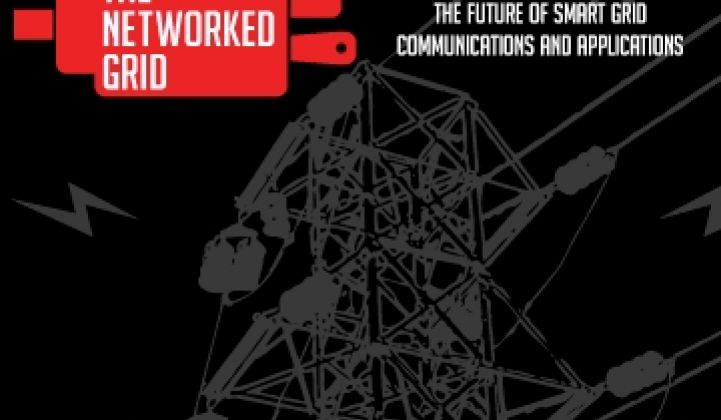SAN FRANCISCO -- Balancing voltage and adjusting for reactive power on the electricity grid doesn't sound as exciting as bringing smart meters and smart appliances to every home.
But the companies doing the process say it can pretty quickly improve grid efficiency by around 5 percent. That could make it a valuable tool in utilities' smart grid quivers, with one caveat – utilities need to be able to save, not lose, money by doing it.
Take PCS Utilidata, a Spokane, Wash.-based company that says its AdaptiVolt system of sensors, devices and controlling software can keep grid voltages efficient and stable.
That can save its customers about 3 percent or more on power otherwise lost to inefficiency nowadays, Gary Keyes, director of sales, said Wednesday at Greentech Media's The Networked Grid conference at Pacific Gas & Electric headquarters in San Francisco (see Smart Grid Roundup: The Future of the Grid).
PCS Utilitdata announced last week that utility American Electric Power has chosen AdaptiVolt for a smart grid demonstration project in Ohio. That project also includes smart grid networking company Silver Spring Networks, as well General Electric and ABB (see Silver Spring, AEP Team on Smart Grid).
Other utilities using AdaptiVolt include Hydro Ottawa in Ontario, Canada, the Kauai Island Utility Cooperative in Hawaii and at the Ripley Power & Light Co. in Tennessee, he said.
It's also been installed at large industrial sites to control the miniature distribution grids that those facilities represent, said Jeremy Wilson, director of technical sales. One such customer, the Plum Creek Lumber Co. fiberboard mill in Columbia Falls, Mont., is saving itself about 7 million kilowatt-hours per year on once-wasted electricity, he said.
The Bonneville Power Administration has identified a "conservation reduction voltage factor" equation to link better voltage control to reduced power demand, Wilson said. Generally speaking, a one-percent reduction in excess voltage can yield a one-percent reduction in demand, he said.
Imagine if such systems were deployed across the world's utilities, Keyes said. That could be a $20 billion market, he estimated.
So-called voltage/VAR (volt-ampere reactive) optimization systems tackle a grid inefficiency that may be hard to comprehend for those not versed in the ways of alternating current. That's the idea of reactive power, or the electricity that flows back up a circuit from loads like motors, air conditioners or washing machines (for a non-mathematical explanation, click here).
Reactive power, in turn, plays into the challenge of keeping voltages constant across the grid, which in North America is typically 120 volts for end customers. If voltages run too high, lights and electronic devices can be strained, which also wastes power. If it runs too low, lights can become dim and motors and heaters perform below par.
Either way, it's a major headache for utilities, which also face the problem of fluctuating voltages lessening the life of transformers and other grid equipment. They've adapted various technologies, such as load tap changers and capacitor banks, to regulate it.
But smart grid monitoring and control systems can improve on the performance of "dumb" technologies, proponents say (see Distribution Automation: Smart Grid's Quiet Efficiency Offering).
Companies working on solutions range from superconductor cable and wind turbine electronics maker American Superconductor and smart grid communications company Current Group to smaller companies like PCS Utilitdata and customer-side voltage regulation startup MicroPlanet (see MicroPlanet: Fine-Tuning Voltage for Power Savings).
There are many different technologies to control voltage and VAR, and many are being tried out at utilities. Current Group has installed its Volt/VAR Control system at utility Xcel Energy's SmartGridCity project in Boulder, Colo. to link up existing systems like capacitor banks and distribution line regulators. SmartGridCity has reported some significant improvements and cost reductions from better-regulated voltage.
And American Superconductor Corp. (NSDQ: AMSC) has sold its D-VAR equipment to grid operators in China and to about 20 utilities – one of its lines of business that also includes superconducting wires and wind turbine designs and components (see American Superconductor: The Quiet Wind Player).
One challenge that utilities face in justifying the costs of such systems, however, is the fact that most of the savings – about 80 percent – accrue to customers, PCS Utilidata's Wilson noted.
Simply put, utilities that earn money based on how much power they sell don't necessarily see a value in reducing the power they deliver to customers, even if it's power that isn't going to practical use.
But then, the big push on utilities to reduce their greenhouse-gas emissions is changing that equation, Keyes said.
And utilities that can sell excess power to other utilities or grid operators at three to four times the prices they charge their own customers are also interested, Wilson added.
On the other hand, voltage/VAR optimization at the customer end is a no-brainer, Wilson said. A PCS system installed at the Plum Creek Lumber Co. fiberboard mill in Columbia Falls, Mont. paid back its costs in about seven months, he said.
Paybacks for utilities are harder to gauge, and depend on how much power they were losing from voltage irregularities in the first place, Keyes said. But a one-to-two year payback should be achievable, he said.



